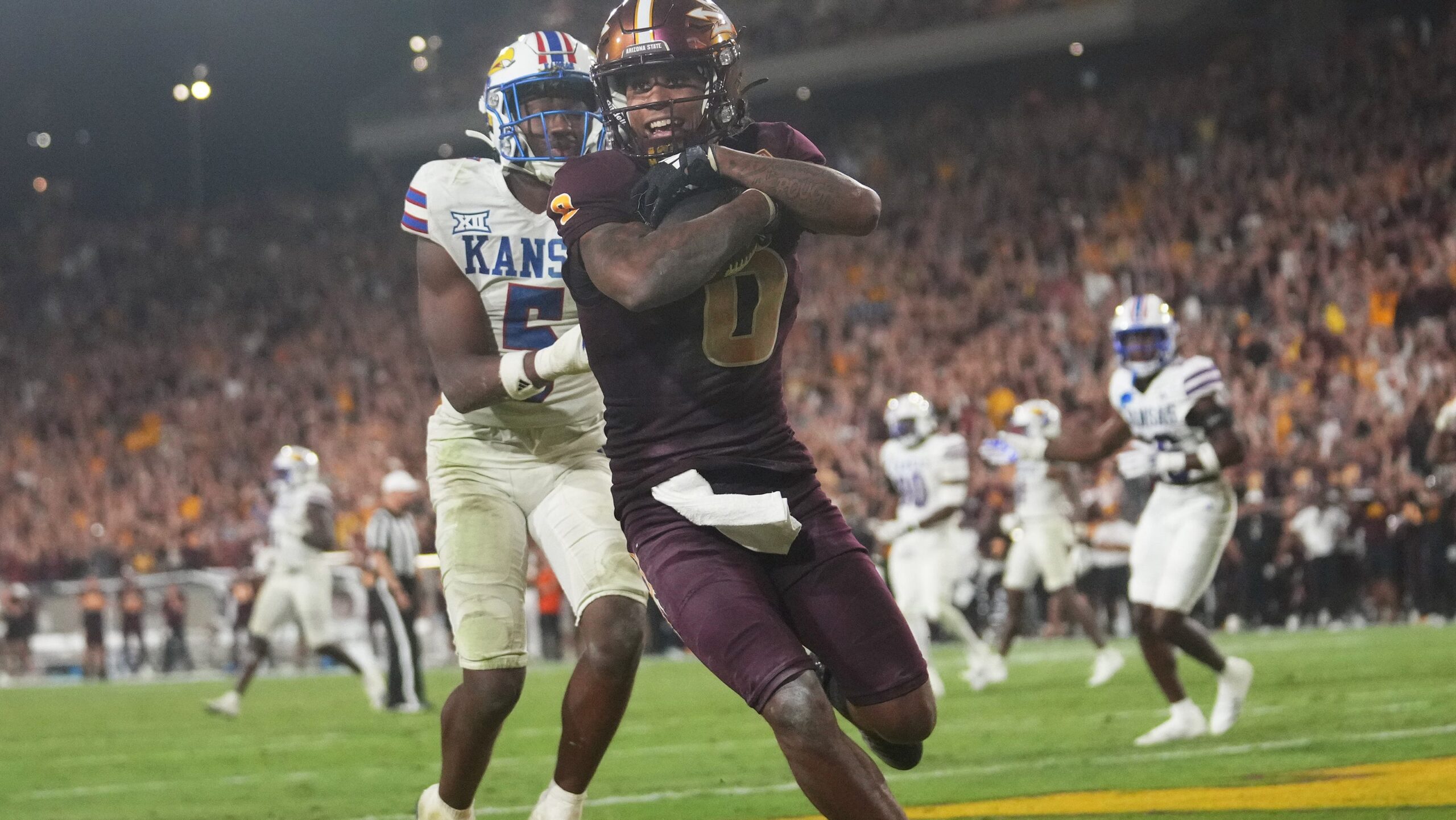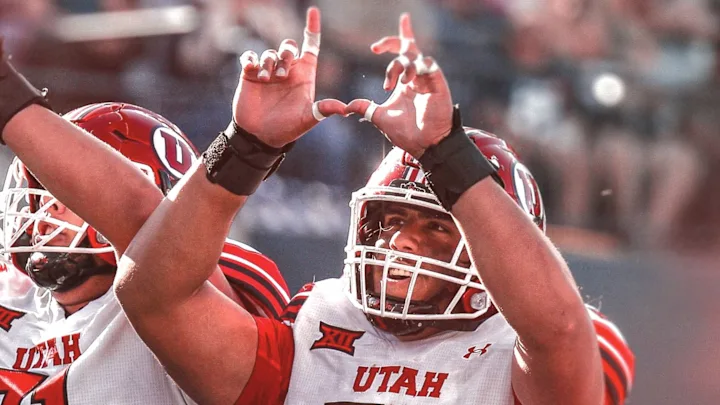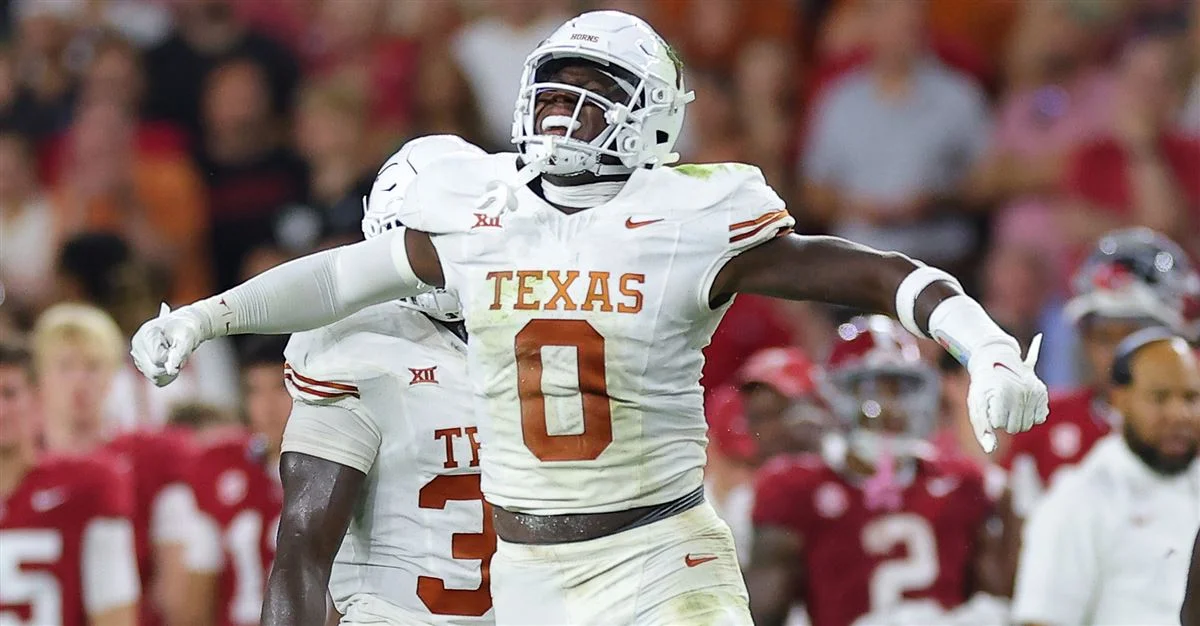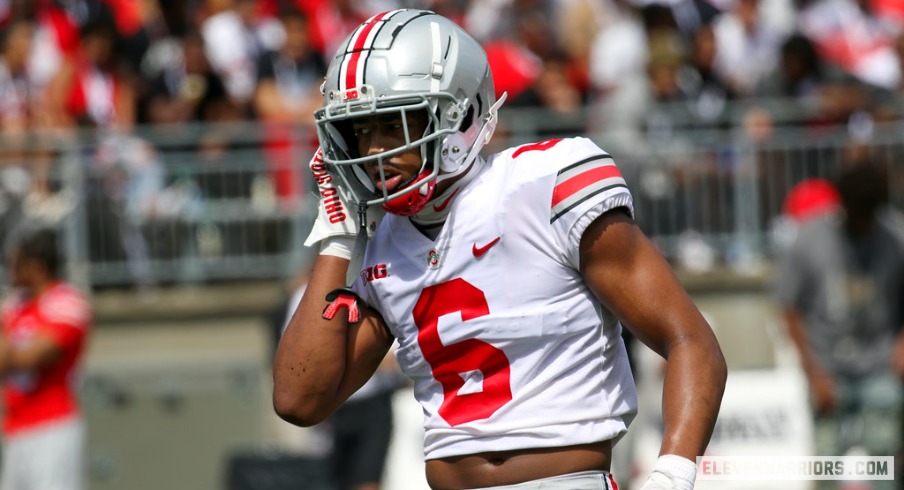By Charlie Campbell.
Send Charlie an e-mail here: [email protected]
Follow Charlie on Twitter @draftcampbell for updates.
This page was last updated April 10, 2019. Follow me @walterfootball for updates.
Running Back Class
Early-round talent: C
Mid-round: B-
Late-round: B-
Overall grade: C+
2019 prospects vs 2018
Saquon Barkley
Josh Jacobs
Rashaad Penny
Sony Michel
Nick Chubb
Ronald Jones
Kerryon Johnson
Derrius Guice
Miles Sanders
Damien Harris
Mike Weber
Royce Freeman
David Montgomery
Devin Singletary
Justice Hill
Myles Gaskin
The 2017 class of running backs was one of the best running back classes in years. The class was strong as well in 2018, so it isn’t surprising that there is a drop-off for the 2019 NFL Draft; the college ranks were depleted with players leaving early.
There could be only one running back, Josh Jacobs, who gets selected in the first round this year, and he is not in the same ball park as a prospect with Saquaon Barkley, Leonard Fournette or Ezekiel Elliott. Jacobs, however, is about equal to Rashaad Penny or Sony Michel, who both went late in the first round in 2018. Miles Sanders, Damien Harris and Mike Weber are not as good as the group of runners who went in the second round last year, but I would put them ahead of Royce Freeman who went in Round 3 during the 2018 NFL Draft.
Safest Pick: Josh Jacobs, Alabama

Previous Picks:
2018: Saquon Barkley
2017: Leonard Fournette
2016: Ezekiel Elliott
2015: Melvin Gordon
2014: Carlos Hyde
2013: Eddie Lacy
I’m writing the same sentence I wrote last year this time just subbing in Barkley for Fournette, “Last year, Barkley was an easy choice, and he had an excellent rookie year.” Fournette’s second season didn’t go as well, but he’s still a good NFL back. Elliott was another no-brainer pick. Three years ago,I said that Gurley would be the safest pick if it weren’t for his torn ACL. Gordon has turned into one of the top backs in the NFL and keeps getting better each season. Hyde has flashed at times, but has not been as good as expected, while Lacy had some good years for the Packers before weight issues ruined his career.
This was an easy choice with Jacobs. With his size, power, speed, running ability, and receiving ability, Jacobs looks like he could be an impactful three-down starter quickly in the NFL. The 5-foot-10, 220-pounder is known to be a great worker and a pure football player who loves the game. He wants to play so deeply, he was a mainstay on special teams for Alabama. I don’t think Jacobs will be as prolific of a running back as Barkley, Fournette or Elliott, but I do believe Jacobs will be a good starter during his pro career.
Biggest Bust Potential: David Montgomery, Iowa State

Previous Picks:
2018: Rashaad Penny
2017: Wayne Gallman
2016: Kenneth Dixon
2015: Mike Davis
2014: Lache Seastrunk
2013: Montee Ball
Penny was a backup as a rookie, but it is far to early to pass any judgements on him. Gallman is stuck as a backup. Dixon didn’t impress as a rookie and was injured one season, so 2019 is a huge year for his career. Otherwise, this bust list is looking pretty accurate. Davis has done very little. Seastrunk never made it in the NFL, although he fell deep in the draft. Ball was a huge bust for the Broncos, which I could see coming.
This was a tough choice because no player really jumps out at me. I chose Montgomery because of the speed issue that can be seen in his tape, his stats, and his combine 40 time. I think Montgomery is a tough runner who has excellent balance and is tough to bring down. He carries some risk for the NFL, however, because he may not have the enough speed to hit the hole and get to the second level in the pro gram. Hence, of the early-round running back prospects, I think Montgomery could have the most potential to be a bust.
Running Back Rankings by Attributes
Natural Running Ability:
NFL prototype: Adrian Peterson, Redskins
- Miles Sanders
- Devin Singletary
- Damien Harris
- Justice Hill
- David Montgomery
- Myles Gaskin
- Josh Jacobs
- Mike Weber
Recap: There are still a number of coaches in the NFL who want an old-school approach of a running-based offense. Additionally, a lot of passing-led offenses want a running back who can wear down defenses in the second half of games. All of these 2019 backs are quality runners.
Singletary is a natural runner who has quickness, vision and balance. His slashing elusiveness style, in combination with his compact build, makes him difficult to tackle.
Sanders is a natural runner who is tough to tackle at the second level because he runs through contact. His knee bend and leverage allow him to run behind his pads and power through arm tackles. On top of his excellent feet, Sanders has some elusiveness in the open field, allowing to cut and weave his way around defenders. Sanders possess a good jump cut and lateral quickness to dodge defenders.
Harris has good bulk with knee bend and ability to run behind his yards. That combines to make him tough to tackle and leads to him picking up yards after contact. He is an excellent fit for a zone-blocking system due to thriving as a one-cut downhill runner. Harris has good vision, cutting ability, and decisiveness to hit the hole. On top of being able to handle a larger work load, Harris does well in short-yardage situations.
Montgomery and Gaskin both have excellent instincts as runners. Gaskin can use his vision and patience to set up blocks, plus has quick feet and movement skills to weave through the defense. Montgomery displays impressive vision and phenomenal balance alongside a solid build, making him tough to get on the ground. Both Montgomery and Gaskin are very natural in their running abilities.
There is no doubt that Hill is a natural runner and is very talented. Perhaps the best traits that set Hill apart are his first-step quickness and his burst to get to the second level of the defense. On top of his speed, Hill has good feet with cutting ability to zig zag through the defense. He plays with good knee bend and runs behind his pads, which helps him finish runs well by falling forward. Via patience and vision, Hill lets holes develop before darting downfield. On top of his running ability, Hill is a nice outlet receiver who runs quality routes and makes catches with his hands.
Jacobs is a power runner with a strong build and a burst to hit the hole. He is a hard-charging downhill back who has a quick first-step to hit the hole before it closes. Jacobs possesses another gear to get to the secondary and is tough for defensive backs to tackle, typically hitting them with ferocity. He is an angry runner who displays an intimidating style. With his size and speed, Jacobs could be a devastating one-cut downhill running back. He is not very elusive and will run through contact rather than try to juke defenders in the open field.
Weber could become a three-down starter off of his thick build, strength, quickness and instincts. He has a compact stature that makes him tough to get a hold of. He uses his build, strength, knee bend, and ability to run behind his pads and pick up yards after contact. Weber is a quick downhill runner who displays impressive lateral quickness. He has good vision that allows him to see openings and dart through holes. With good feel and instincts, Weber lets plays develop and can use his lateral quickness to get him in position to bolt downhill. Weber is a strong, tough runner.
Pass Receiving:
NFL prototype: Le’Veon Bell, Jets
- Josh Jacobs
- Miles Sanders
- Myles Gaskin
- Damien Harris
- Mike Weber
- David Montgomery
- Justice Hill
- Devin Singletary
Recap: The passing-driven NFL has many offensive coordinators emphasizing a running back’s ability to help the aerial offense over their running ability. Coaches want backs who have good hands, run good routes and can rack up yards as outlet receivers.
As a receiver, Jacobs is well suited for the current NFL. He runs good routes and has soft hands. Jacobs is a real threat in the passing game and can rip off yards in chunks. He shows a surprising ability to adjust to the ball. With his speed and power, Jacobs is a mismatch weapon in the passing game because linebackers will have a very difficult time running with him and defensive backs are going to be hard pressed to tackle him.
Sanders showed at the combine that he has some natural feel as a receiver out of the backfield. He is athletic, quick and fluid in the open field. His route-running and hands should lead to him being a nice check-down receiver in the NFL.
Over his senior and junior seasons, Gaskin caught 42 passes, and he was a nice outlet receiver for Washington. Gaskin is quick, athletic, and fluid in space with soft hands and smooth route-running.
In the passing game, Harris is an asset. He did some real damage for Alabama catching passes out of the backfield. On check downs, Harris very dangerous to rip off yards in chunks. He has soft hands and runs good routes. In the open field, Harris is tough to tackle. He can use his powerful frame to run through tackles from defensive backs. Harris possesses excellent balance to stay on his feet even when defenders go low on him. If Harris is not a starter, he should be a really good backup running back with his ability to contribute in both phases and serve as a receiving outlet.
As a receiver for the NFL, Montgomery is impressive for a big back. He has soft hands to make receptions and runs quality routes.
Hill is a fast and shifty back who should be a good fit as a receiving option in the NFL. Oklahoma State didn’t use him in that role much, but he has that potential. Singletary had only six receptions last year and wasn’t used in that role, but he has more ability to do contribute as a receiver than the numbers illustrate.
Pass Blocking:
NFL prototype: Jordan Howard, Eagles
- Devin Singletary
- Josh Jacobs
- Damien Harris
- Miles Sanders
- David Montgomery
- Mike Weber
- Myles Gaskin
- Justice Hill
Recap: This is huge for offensive coordinators. If a running back can’t pass protect, they are going to have a hard time seeing the field in the NFL. If the defenses know that a running back isn’t trusted to protect the quarterback, it is an immediate tip about what the play is going to be. Coaches want multiple backs with pass-protection skills. The importance of blitz pickup and pass blocking are increasing every year for running backs. The college game has caught on to this, and the 2019 group of running backs is pretty well prepared.
None of these backs are as good as Ezekiel Elliott was entering the NFL, but a lot of them have potential. Singletary is a tough blocker who will take on blitzers and is smart at identifying the correct player to block. Once he gets some development with learning NFL blitz schemes, he could be a real asset in the passing game.
In blitz protection, Jacobs is a very good blocker and doesn’t shy away from contact. He has the frame to take on rushers and a fiesty attitude to mix it up with rushers. He got more experience as a pass protector over his college years from being a back that rotated into the passing game.
Harris, Sanders and Montgomery all flashed some blocking potential. They each have good size to square up blitzers and take on defenders.
Weber flashed some ability as blitz protector. Gaskin and Hill are undersized for blitz protection in the NFL. They could be overmatched by NFL defenders in this regard.
Yards After Contact:
NFL prototype: Todd Gurley, Rams
- Miles Sanders
- Josh Jacobs
- David Montgomery
- Damien Harris
- Mike Weber
- Devin Singletary
- Myles Gaskin
- Justice Hill
Recap: For running backs to be consistently successful in the NFL, they have to have the ability to pick up yards after contact. Breaking tackles is critical to moving the chains and setting up good down and distance. What really stands out about Sanders and makes him unique is what an excellent job he does of keeping his legs going after contact. Sanders uses that to break tackles and accelerate downfield when it looks like he is going to be stopped. He is tough to tackle at the second level as he runs through contact.
Jacobs is a power runner with a strong build and a burst to hit the hole. He is an angry runner who has an intimidating style. With his size and speed, Jacobs could be a devastating one-cut downhill running back who charges through tackles and continues to accelerate downfield.
Montgomery also is excellent at generating yards after contact. He has superb balance that he is able to maintain despite contact from defenders. His ability to break tackles and generate yards after his contact is his best trait for the next level. For college, he would be ranked No. 1 in this category, but in the NFL, I have him below Sanders and Jacobs because I think the speed factor is going to lead to Montgomery having more defenders closing on him to produce gang-tackle situations that no back can constantly overcome.
Harris has good bulk with knee bend and ability to run behind his yards. That combines to make him tough to tackle and leads to him picking up yards after contact.
Weber is similar, possessing a compact build that makes him tough to get a hold of. He uses his build, strength, knee bend, and ability to run behind his pads to pick up yards after contact.
Singletary was able to generate yards after contact in college, but I think it will be more difficult for him to do that in the NFL given the much larger defenders than he is used to. Gaskin and Hill are smaller backs who will have a hard time generating yards after contact in the NFL.
Zone-Blocking Runner:
NFL prototype: Ezekiel Elliott, Cowboys
- Josh Jacobs
- Damien Harris
- David Montgomery
- Miles Sanders
- Mike Weber
- Devin Singletary
- Myles Gaskin
- Justice Hill
Recap: The zone-blocking scheme calls for backs to have quickness and physicality. They need the ability to follow the moving wall, use vision and anticipation to see the hole opening, and make one cut to run downhill. It is a different type of running compared to a set, designed play. There isn’t a running back in this group who would be a bad fit for a zone scheme.
There is a lot to like about Jacobs for a zone-blocking system. He is a hard-charging downhill hill back who has a quick first-step to hit the hole before it closes. Jacobs also displays another gear to get to the secondary and is tough for defensive backs to tackle, typically delivering the blow with ferocity. He would be a great fit in a zone-blocking scheme.
Harris is an excellent fit in a zone-blocking system because he thrives as a one-cut downhill runner. He has good vision, cutting ability, and decisiveness to hit the hole.
Montgomery could function as a one-cut downhill runner. He has imposing strength to run through tackles and keep his legs going downfield. Sanders is similar and also could excel in a zone scheme. He does a great job of darting downhill and keeping his legs moving after contact.
Weber is a quick downhill runner who displays impressive lateral quickness. He has good vision that allows him to see openings and dart through holes. In a zone scheme, he could be effective.
Singletary could function in a zone scheme, as he flows with the line and bolts downhill. Gaskin and Hill could be better in a man schemes, but they should have enough ability to execute plays in zone schemes.
Power-Man Runner:
NFL prototype: Leonard Fournette, Jaguars
- Miles Sanders
- Devin Singletary
- Justice Hill
- Myles Gaskin
- Damien Harris
- Josh Jacobs
- David Montgomery
- Mike Weber
Recap: Sanders has excellent feet that help him be elusive in the open field. He can cut to weave his way around defenders. Sanders also has a good jump cut and lateral quickness to dodge defenders.
Singletary, Hill and Gaskin are all shifty runners with the cutting ability, speed, and elusiveness to help their blockers and make their own holes. Singletary’s burst, lateral speed, and ability to spin away from tacklers make him a dangerous runner for a power-man-blocking scheme. Gaskin is a shifty runner who also can create for himself. Hill is very fast and has open-field moves to adapt well to a power-man scheme.
Harris and Jacobs could function well in a power-man scheme. Harris has more elusiveness to make tacklers miss, while Jacobs is a hard-charging runner who can power through arm tackles.
Montgomery could fit in a man scheme, but his lack of speed could be more problematic in a man scheme. Weber is more of a one-cut downhill runner. He does have lateral quickness, but he is more of a North-South runner.
NFL Picks - Dec. 13
NFL Power Rankings - Dec. 10
2026 NFL Mock Draft - Dec. 10
Fantasy Football Rankings - Sept. 1




